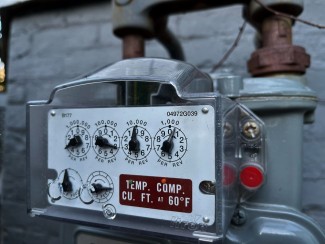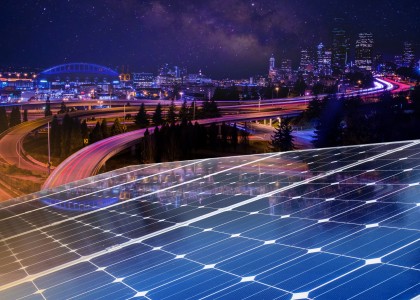Washington, DC—Many households’ gas bills will likely climb steeply in coming decades as building heating and fuels are decarbonized and aging gas pipelines are replaced, according to a new report from the American Council for an Energy-Efficient Economy (ACEEE). The report recommends that policymakers and regulators begin planning now to minimize future costs to gas utility customers.
ACEEE’s report models impacts under two building decarbonization pathways: electrification of currently gas-powered end uses and the replacement of fossil gas with lower-carbon alternatives such as biogas from sources like landfills and animal manure. The study also considers the costs of gas pipeline replacement.
The report finds that for an individual household, gas costs could:
- Quadruple if biogas replaces fossil gas,
- Increase nearly 130% if most gas users electrify and the remaining customers are left to shoulder gas infrastructure expenses, and
- Double if large numbers of gas pipes are replaced (which is planned in some regions but not others).
“Electrification is likely the most cost-effective decarbonization strategy for most buildings. Businesses and households that remain on the gas system could see a significant increase in their bills going forward,” said Steven Nadel, executive director of ACEEE and author of the report. “Utilities and their regulators should start planning now to avoid costly gas pipeline replacements and assist households that are overburdened by energy costs with the transition off planet-warming fuels.”
Gas is used in many homes for heating and hot water, and in smaller quantities for cooking and clothes drying. As buildings move off gas through electrification, owners of those buildings will generally be freed from gas system costs (like pipe maintenance). But expenses will increase among remaining gas customers because the system costs are spread over a smaller base of gas customers. The report found that if a quarter of gas customers fully electrify, costs for remaining gas customers could increase by 21%. If three-fourths of customers move fully off gas, remaining gas customers could see cost increases of 129%.
Forgoing electrification of current gas end uses and instead relying on biogas for building decarbonization would raise the average household’s gas utility bills by about $3,500 a year, according to the study. In addition, gas customers in regions with gas pipes slated for replacement could see additional cost increases unrelated to biogas. In areas with minimal pipeline replacement, costs could increase by 15%. In areas with older pipes, many of which are scheduled for replacement, pipeline replacement could raise costs more than 100% per gas customer.
The report also considered a middle-ground scenario with half of gas customers fully electrified, half transitioned from fossil gas to biogas, and a moderate level of pipeline replacement, finding an average gas customer cost increase of about 172%, or $2,283 per year.
ACEEE’s new study examined costs for gas customers under different decarbonization and pipeline replacement scenarios, not the cost of electrifying homes. An ACEEE report last year found that in most regions of the country, electric heat pumps offer the least expensive option to decarbonize home heating.
The new report states that more research is needed to explore policy frameworks for minimizing future costs, such as accelerating depreciation of already sunk costs and decommissioning portions of the gas distribution system where full electrification is less expensive than pipe replacement. Uncoordinated residential electrification could be the costliest electrification pathway, but costs can be significantly lowered by combining electrification (with either air-source heat pumps or networked geothermal heat pumps) and strategic gas pipeline retirement.
Planning for strategic decarbonization will require a serious focus on equity. Middle- and upper-income households that can afford to electrify will be financially incentivized to do so amid rising gas bills. But households with the least ability to afford the expense of biogas or the rising cost of remaining on the gas system as pipes are replaced and buildings electrify will need assistance to transition off the gas system.
ACEEE’s report used data from a 2022 University of California study that considered the impact of a declining number of customers on gas utility infrastructure and customer costs. ACEEE used those data to project future costs under scenarios assuming a transition from fossil gas to biogas, differing levels of electrification, and other variables.



